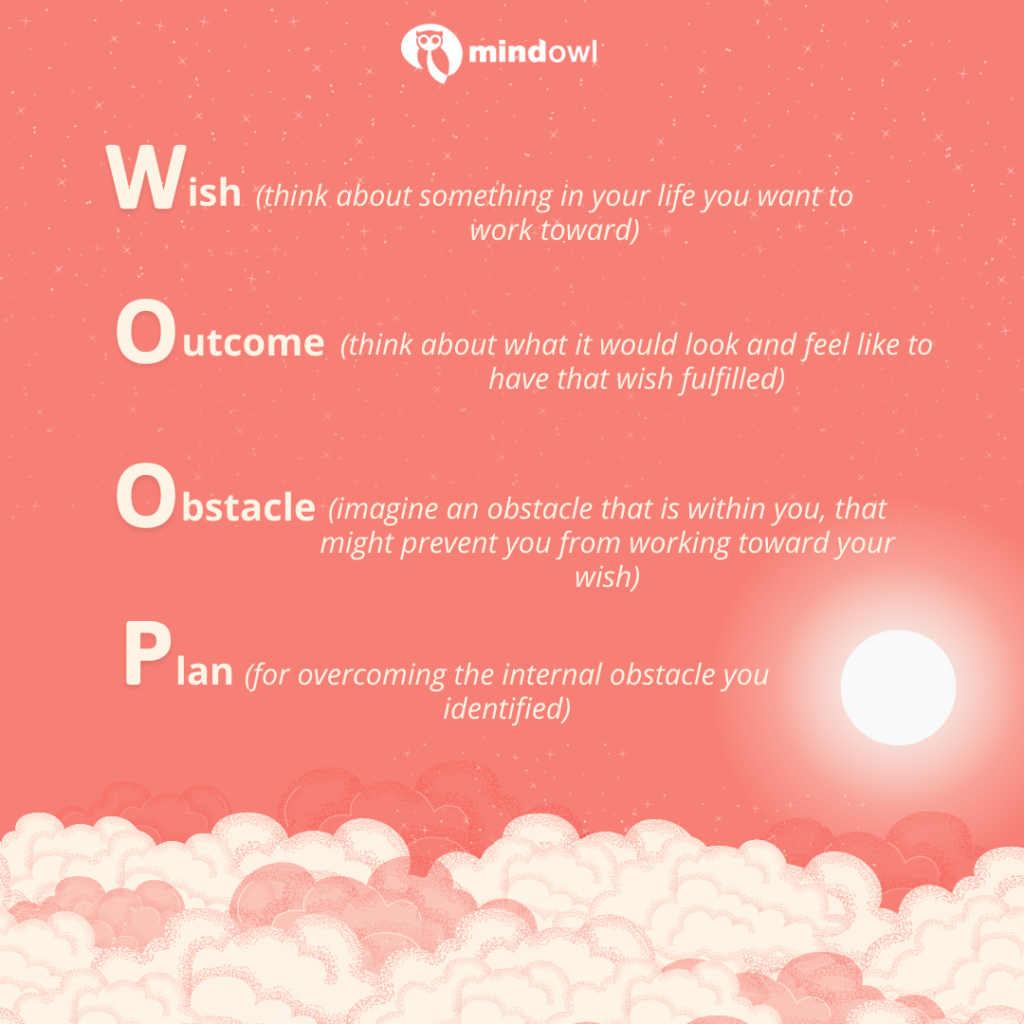“Shut up, I’m manifesting”: a short, initially confusing phrase, but one that’s blown up on social media recently. Manifesting is a term that has become increasingly familiar to many of us, although there is still a lot of uncertainty about what it actually means, and crucially, whether it works. The lack of scientific support for the practice of manifestation has not stopped it from becoming a widely used method of generating positive emotions and thoughts, combating negative feelings and striving towards goals. But do manifesting practices really work? This blog post will get into both sides of the argument; but first, let’s quickly look at what manifesting actually means.
What Does Manifesting Mean?
Manifesting refers to the idea that we can control our future using positive thoughts, affirmations and written statements. It has roots in self-help books like The Secret by Rhonda Byrne, and ultimately boils down to the idea of boosting self-esteem and encouraging positive changes in your daily life, by combating negative energy and patterns in your subconscious mind.
One term used in conjunction with manifesting is positive affirmation. Positive affirmations are defined by the Psychology Dictionary as “brief phrases, repeated frequently, which are designed to encourage positive, happy feelings, thoughts, and attitudes”. Simply telling yourself repeatedly that you will achieve something can be highly motivational, because you can end up convincing yourself that you’re capable of turning dreams into reality. This is closely linked to a concept called the law of attraction, which suggests that a positive mindset will bring positive things, while negative feelings and thoughts lead towards negative events. Essentially, your life events and experiences are a direct result of your mental attitude.
There are a number of ways to practise manifestation. Some people use vision boards to create a visualization of a life in which they’ve achieved all their wildest dreams, they’re physically healthy, and they have insane amounts of money (although it’s important to remember that money doesn’t always buy happiness). Others keep intention journals as a way of writing down specific goals and concrete actions to pursue. Meditation is also used as a manifestation method by some, although there is an argument that the two practices are actually strongly opposed. But more on that later. Let’s first take a look at how the manifesting craze originated.

Where Did It Come From?
The popularity of manifesting has grown dramatically in the last two years, particularly since the outbreak of the pandemic. During lockdown, TikTok was rife with the meme “Shut up, I’m manifesting”, as people adopted various techniques in an attempt to set themselves on a real life path towards a soul mate, a dream job, or financial freedom. Even before the virus struck, growing interest in wellness and self-care meant that this subject was getting its fair share of traction.
However, the concept of manifestation has been around for much longer than you might think. The basic idea that positive or negative thoughts bring positive or negative experiences has links to the New Thought movement in 19th century America, which encompassed a variety of religious, metaphysical, and mind-healing practices. Today, its popularity has arguably been encouraged by the ever-declining reliance on organised religion — in this way, it is much like the astrology boom. The pseudoscientific idea that positive thoughts bring positive things gives people something to believe in, and places them in the context of the universe. And while this may seem like a good thing capable of bringing feelings of joy and satisfaction to many people’s lives, it’s important to be aware of the downsides to manifestation.
The Problems With Manifesting
One of the main problems with manifesting is that it doesn’t take into account the experiences of people whose thoughts are inherently negative, for instance those who are struggling with anxiety, depression, or other mental health conditions. For example, some people may worry that by thinking something bad is going to happen, they’ll accidentally make it occur. In this sense, manifestation can make someone’s physical reality worse; therefore, you should view the practice with caution.
Ultimately, the law of attraction doesn’t always make sense. Suggesting that “like attracts like” to someone who has experienced a serious trauma such as physical or emotional abuse or the death of a loved one can be nothing more than insulting. For that very reason, some believers are quick to make the exception that no trauma is manifested — for instance, if someone’s relative died from cancer, obviously it is not their fault, and to suggest so would be awful.
Perhaps the biggest issue with placing serious value in something with no factual basis (in fact, with scientific evidence to the contrary) is that we leave ourselves more vulnerable to things like fake news and conspiracy theories. Research has shown that people who trust feelings over facts are far more likely to fall victim to these misbeliefs. So, while manifestation techniques may help you in certain situations, that doesn’t mean they can always be relied on for bringing positive experiences.
What Do Psychologists Have To Say About It?
While setting a manifestation goal and making strides towards can be a really positive thing to do, manifesting can also end up being quite a limiting belief. Focusing too intently on the power of your thoughts can make you complacent, because it distracts you from the real life actions needed to fulfil your desires. Focusing on visualization sessions without doing anything else to support your ambitions basically makes you less likely to accomplish your goals. To combat this, German psychology professor Gabrielle Oettingen came up with WOOP (Wish, Outcome, Obstacle, Plan) as a practical alternative to manifesting which focuses on overcoming obstacles rather than ignoring them.
The doubts Oettingen has about the pseudoscientific nature of manifestation are shared by most psychologists. In Psychology Today, psychological scientist Tchiki Davis writes that manifestation guides “claim to be scientific and factual, but they’re not actually based on scientific evidence”. The idea of manifestation ultimately has no real science backing it up, and most experts are pretty worried about the effects of convincing yourself that you can change your current life circumstances purely through manifesting. According to psychologist Catherine Sanderson, “Some positive thinking is a good thing – physically and mentally. Just not if it crosses the line and becomes delusional.”
However, some elements of the practice do align with certain areas of psychological research. Claude M. Steele’s study on self-affirmation theory shows how we can maintain our sense of self-integrity by affirming our beliefs to ourselves in positive ways. Other research has found that self-affirmations can actually decrease health-deteriorating stress. It’s important to note that while these studies cite the potential benefits of manifestation, they don’t back up the idea that positive affirmation can actually be responsible for success itself. So, taking all this into account, is it a practice that’s worth taking up?
So… Does Manifesting Actually Work?
Even though there’s no scientific basis for manifestation, the fact is that there are a number of psychological and neurological explanations for why it can work. One of these is the placebo effect. A well-known phenomenon, the placebo effect shows how the healing powers of the mind are far greater than we might imagine – the idea that external factors are playing into our hands can be all we need to set positive events in motion. Similarly, self-affirmation can lead to success by relieving stress and helping induce a calmer mindset more ready to make forward steps.
It’s easy to see why so many people have decided to try manifesting. The idea that we can overcome obstacles simply by focusing hard on them and convincing ourselves we will succeed is incredibly alluring. It allows people to feel like they have control over circumstances which they often can’t actually influence. In this sense, manifesting can be empowering. And when a lot of the most prolific online manifestation advocates are beautiful, well-dressed, and living a healthy life in an expensive house, it’s no wonder many people get sucked into thinking that manifesting money and success will give them a perfect life too. Unfortunately, these material, professional, or personal successes usually come from a mix of hard work, luck, and privilege, rather than just positive vibes. So how can we cultivate a sense of positivity and calmness without compromising our work rate, motivation, or mental balance? Well, mindfulness could be the answer…
Mindfulness or Manifestation?
As we’ve explored, there is an element of truth in the idea that our expectations, positive or negative, often tend to be confirmed. However, this doesn’t mean that manifestation itself actually works. Self-fulfilling prophecies happen because if we don’t believe we can achieve a goal, for instance landing a dream job, we enact behaviours that will make this progress less likely, for instance engaging in negative self-talk or acting moody in the interview. In this sense, cultivating positive energy can be beneficial, because using a manifestation method like a vision board can help alter our mindset and provide positive outcomes in terms of our personal growth and development. But this isn’t because of magic, it’s because of attitude.
There’s nothing wrong with thinking positively about your goals; in fact, this can lead to a more intentional life. However, overestimating the power of your own thoughts could send you on a bit of an ego trip, as well as having other dangerous implications. If you place too much value on your own ever-changing thoughts, you could actually create anxieties that weren’t there before. This is where mindfulness comes in.
Mindfulness is all about separating yourself from your thoughts, and recognising that you are not defined by the negative things whirring around your brain. In many ways, mindfulness meditation (which focuses on the separation of thought and reality) is the polar opposite of the manifestation process.
However, it’s not impossible to combine the two ideas. Meditation can actually allow you to visualize clearer targets and aims, which you can then utilise to manifest things that actually matter to you. It’s worth remembering that manifesting doesn’t just mean thinking about happy things — it’s about using a focused mentality to draw your attention to specific goals and create visualizations that you can genuinely believe in. Rather than just mindlessly repeating positive affirmations, bring mindfulness into your visualization practice. This form of action can help you gain more control over your thoughts and feelings and have a genuinely positive impact on your present reality and your future prospects.
MindOwl Founder – My own struggles in life have led me to this path of understanding the human condition. I graduated with a bachelor’s degree in philosophy before completing a master’s degree in psychology at Regent’s University London. I then completed a postgraduate diploma in philosophical counselling before being trained in ACT (Acceptance and commitment therapy).
I’ve spent the last eight years studying the encounter of meditative practices with modern psychology.





